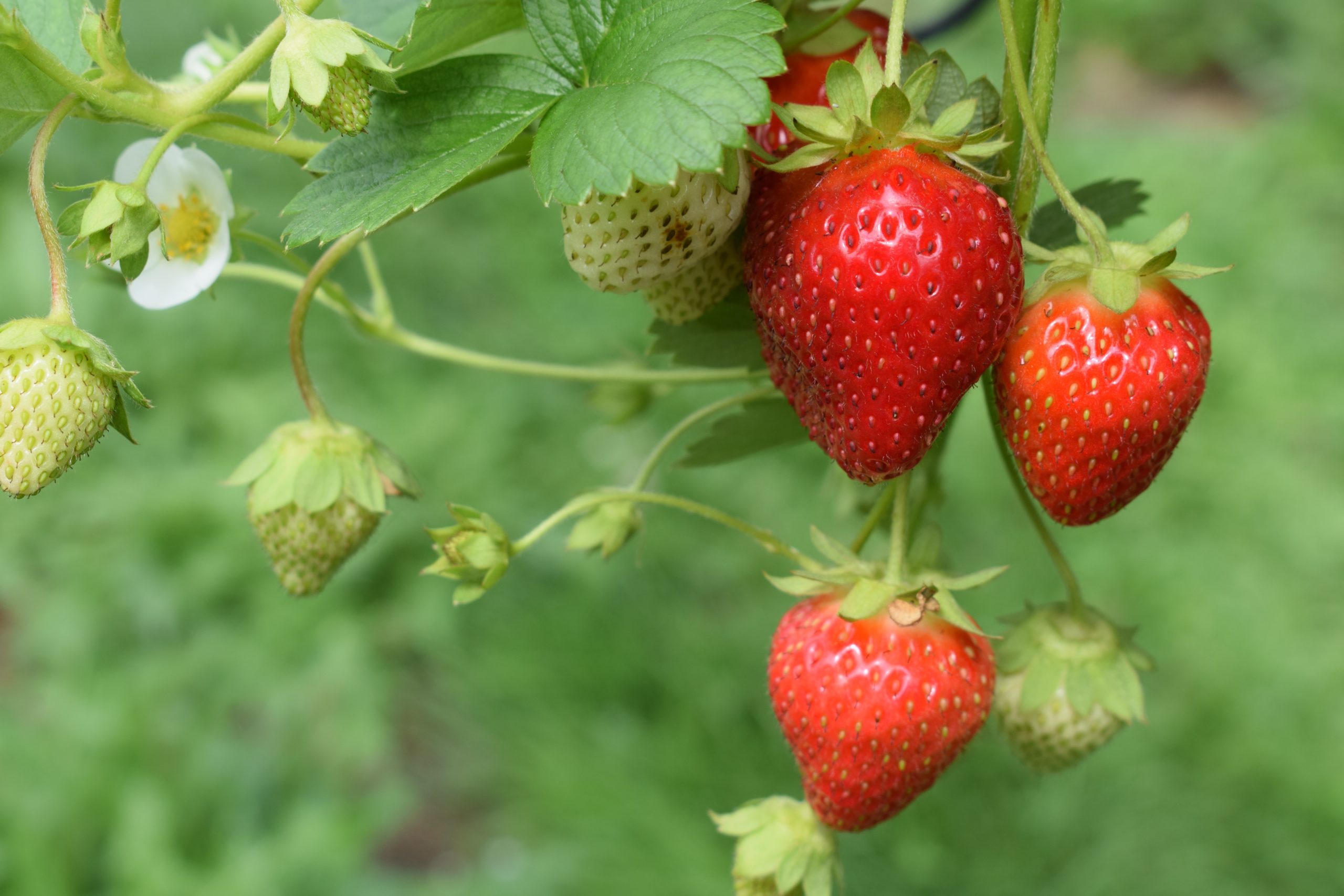Homegrown vs. store-bought: we all know which one wins when it comes to taste. (Homegrown, every time.)
And if you’ve had a homegrown strawberry, you know this comparison is particularly true with these juicy summer staples. When picked, the sugars in strawberries begin converting to starch. So the fresher the strawberry, the sweeter the bite.
Thinking of adding strawberries to next year’s harvest?
For those in zone 7 and southward, it’s actually best to plant your strawberries now—in the fall.
Keep reading to learn more about prepping your strawberry plants in the fall.
Why plant your strawberries in the fall?
Strawberries are hardy perennials, making them an excellent choice for beginner gardeners looking to branch out into the world of growing fruit. Strawberry plants go dormant in the winter, then begin producing new foliage as temperatures rise again the following season.
For those of us in zone 7 and southward (that includes us in Tennessee), strawberries can be planted in the fall. This allows the root system to establish itself over the fall months, prior to going dormant in the winter. This gives you a headstart come spring, as your strawberry plant will be fully-rooted and more mature. If you wait until the spring months to plant, this will delay your strawberry production.
However, for those in colder regions (zones 6 and northward), planting in the spring is your best bet. While strawberries are tough cookies that can survive cold temperatures, planting in the fall in upper zones does not provide enough time for roots to establish before cold weather hits.
Strawberry Planting 101
Different strawberry varieties produce fruit at different times. Some produce berries only in the summer, whereas everbearing varieties produce a light crop in the summer, then a second batch in late summer and early autumn. Your local nursery will be able to advise which variety is right for you.
Strawberries need nutrient-rich, well-draining soil with a pH of 5.5 – 6.8. They need 8 hours of full sun exposure daily.
Compost is the name of the game when it comes to adding nutrient-rich organic material to your soil. For those with clay soil, amend with 4 inches or more of compost. For sandy soil, remove weeds and amend with a 1 inch layer of compost.
Most strawberry varieties sprawl, meaning they produce offshoots, or “daughter” plants. Leave 18 – 20 inches between your newly-planted strawberry plants to allow for this growth. Plant just deep enough so that the roots are covered with soil, but the crown—the central growing bud that produces new roots and new flower buds—must remain exposed to light and fresh air. If you bury the crown too deep, your plant could rot. This article provides a great illustration of how deep to plant your strawberries.
Location, location, location: plant your strawberries in an area where you haven’t previously grown other strawberries, tomatoes, peppers, or eggplant, as this could put your new strawberries at risk for diseases such as Verticillium wilt.
Strawberries have a shallow root system, so consistent moisture is important. Fall water intake actually dictates the following year’s fruit production. Ensure your strawberry plants receive 1 – 1.5 inches of water each week. Avoid wetting the leaves, which can lead to rotting.
Winterizing Your Strawberry Plants
While strawberries are naturally cold hardy, some zones will need to provide additional protection against freezing temperatures.
Winterizing your strawberry plants is fairly simple—it just involves applying a layer of mulch over your plants. However, timing is everything; you don’t want to apply mulch until your plants are fully dormant. Plant dormancy occurs in regions where the temperatures drop into the low 20s. If you apply mulch too soon, you put the crown at risk for rotting.
Your strawberry plants are ready to be mulched once the top ½ inch of soil has frozen and daytime temps are consistently below 30° F. For those in milder climates, you can apply mulch once soil temperatures dip to a consistent 40° F. Your local Ag Extension office is a great resource when it comes to nailing the timing on this.
Once temperatures are just right, apply a 3 – 5 inch layer of loose mulch, like straw, bark chips, or pine straw, over your strawberry plants. This should keep them nice and snug throughout the winter!
Once growth returns in the spring, it’s time to remove your mulch layer and start daydreaming about your favorite strawberry recipes.
Read more about strawberry care in The Old Farmer’s Almanac.


